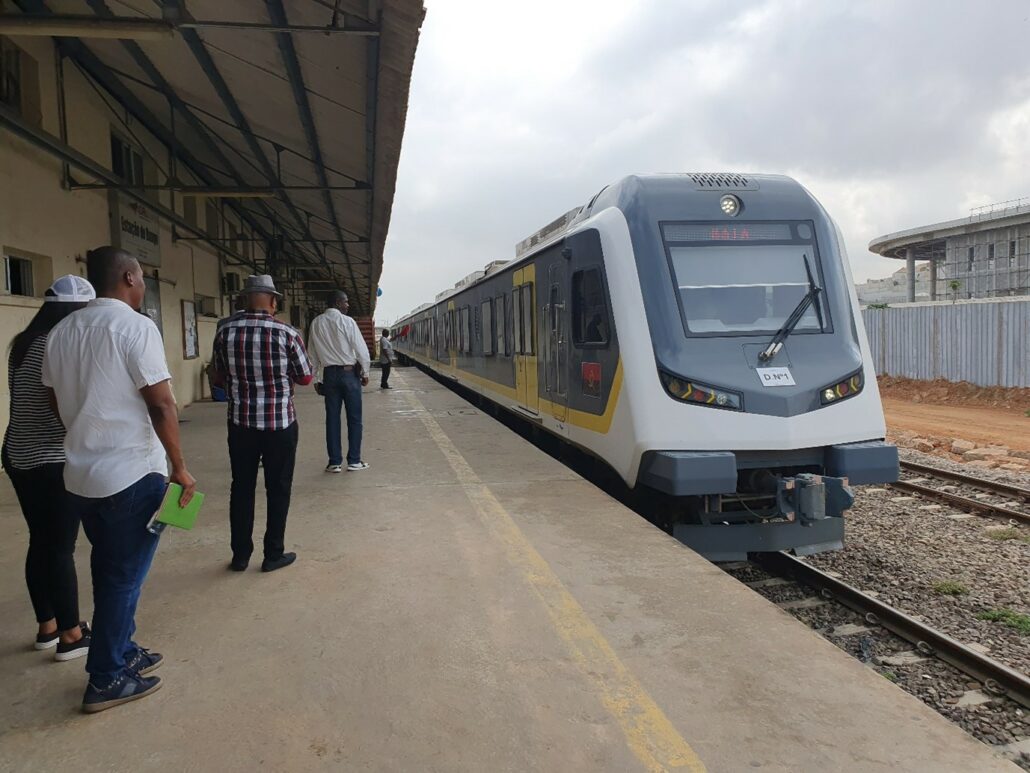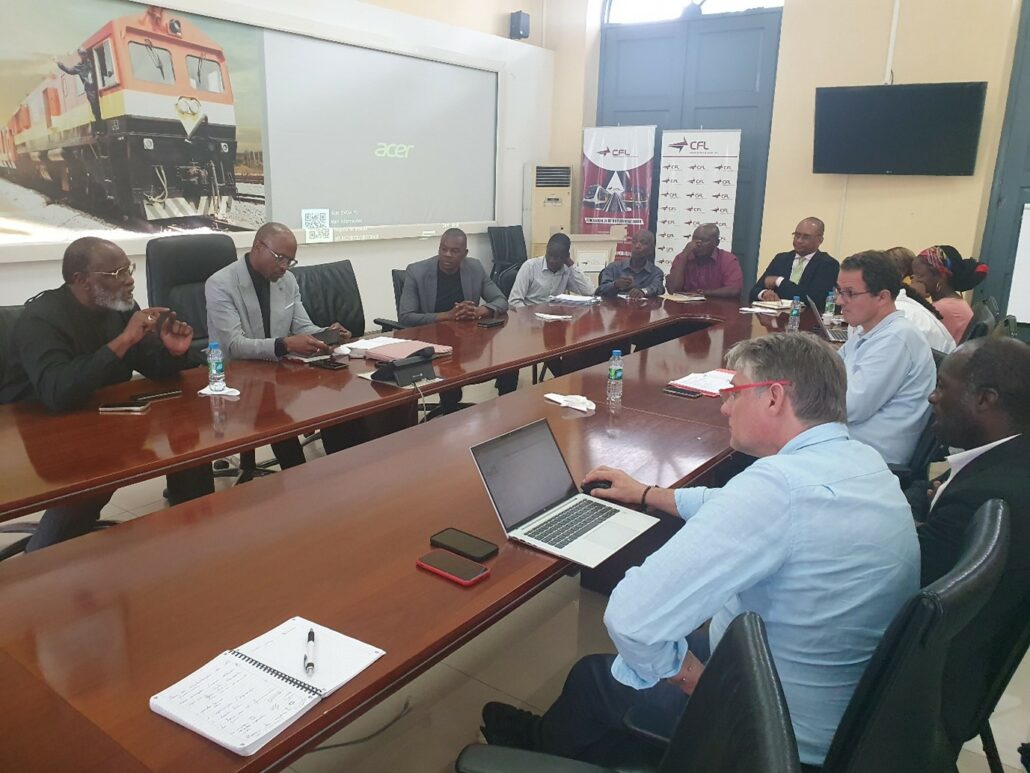Technical cooperation Ministry of Transport Angola – AFD – CODATU: improving the perception and operation of the Luanda railway line
In May 2022, AFD, CODATU and the Angolan Ministry of Transport (MinTrans) signed a cooperation agreement to support MinTrans in developing an efficient, integrated and sustainable urban mobility system for its capital Luanda and the country’s secondary cities. This cooperation agreement provides MinTrans with a Technical Expertise and Experience Exchange Fund (FEXTE) worth one million euros over a three-year period, during which time capacity-building activities will be set up for MinTrans and other Angolan players in the transport sector, experience will be exchanged with French and African cities, diagnostics and studies will be carried out, and various forms of support will be provided.
Among the various priority areas of work identified during the first diagnostic mission a year ago was support for the public company Caminho de Ferro de Luanda (CFL) – Railway of Luanda . CFL is responsible for managing and operating the railway line that runs from the port of Luanda (Bungo station) to the new airport (extension to be inaugurated in 2023). This railway line, ideally located on the main axis of the Luanda conurbation, is seen by MinTrans as a potential lever for relieving the growing demand for mobility within the Angolan capital. According to a study by TUT-POL (Harvard University), this demand for transport is estimated at 2.8 million journeys a day, and the public transport services available are still far from meeting this demand.

Service on this rail line is still relatively underdeveloped. There are very few services, with 16 return journeys a day, of which only one is made at rush hour (a saturated route on which around 700 passengers are crammed into the trains). The railway infrastructure was built by a Portuguese company in 1889. The company remained the property of the Portuguese state until Angola’s independence in 1975, when it was expropriated and nationalised. However, with the outbreak of civil war that same year, the tracks and much of the rolling stock were badly damaged. Since 2005, just after the end of the war, a great deal of investment – almost USD 350 million – has been mobilised to rehabilitate the public company and its infrastructure. In the immediate aftermath of the war, the reopening of the CFL was seen as a genuine symbol of the return of peace, and a driving force for economic development in the capital. Today, however, a number of factors are calling into question the effectiveness of the transport system.
After decades without rail transport, an entire generation has lost the habit of using it. This can be seen in the low number of passengers taking the train, the lack of awareness among Luanda’s inhabitants of the existence of the line and its service points, and also in the poor perception and behaviour that degrade the CFL’s infrastructure and service.
These behaviours include, first and foremost, the dumping of rubbish on the tracks by local residents who use the line as a dumping ground (because the waste collection service is too far away), which prevents the use of one of the two lines of the railway. Trains often only run on one track, which severely limits the number of journeys that can be made each day. This problem goes beyond the remit of the CFL and must also be addressed by the local authorities, as well as by representatives of the associations in the neighbourhoods concerned (setting up a waste collection service in the riverside neighbourhoods, awareness-raising campaigns, etc.).

On a day-to-day basis, the CFL also has to contend with untimely track crossings by local residents who see the line as a road to be crossed, albeit a more dangerous one with obstacles. They often cross the lines and damage the fences that are supposed to isolate the infrastructure, instead of using the dedicated footbridges, which they often find too far away and unsafe. In recent years, street vendors have got into the habit of setting up on the tracks, attracting more people to this dangerous area. Every month, there are several cases of collision, often fatal, between the train and local residents. As a precautionary measure, the train therefore runs at a much slower commercial speed than it should to ensure a normal service for users. Here again, the authorities and neighbourhood associations need to take action to improve the situation: rebuild the fences, build suitable footbridges, introduce safety measures, etc.
Lastly, CFL rolling stock is subject to daily acts of vandalism (throwing stones at trains, theft of rail bolts, damage to equipment, etc.), often carried out by young people from working-class neighbourhoods who see this infrastructure as an emblem of the State, and show their frustration by rebelling against this symbol.
To address these issues, CODATU’s experts are proposing a social approach. In fact, this is a societal problem and not just one linked to the operation of the railway line. To this end, we have proposed to the local partners that they bring together the various parties involved to work together on solutions to remedy this situation, which threatens the lives of local residents on a daily basis and prevents the CFL from operating efficiently.
Over the last few months, CODATU has been working closely with the members of the LFC to identify an initial working perimeter, i.e. a critical area where these problems are regularly observed and where we could bring together residents, local authorities and members of the LFC to initiate a dialogue between the various parties. The district chosen for this pilot project is Sambizanga, which covers an area of 14.5 km2 and borders part of the train route in Luanda city centre. Sambizanga has a population of 300,000 and is one of a number of districts in the capital that have grown up haphazardly on plots of land originally intended for CFL operations.
Whereas more than 500 metres of land on both sides of the tracks used to be reserved for the public company in the pre-war period, this figure has now been reduced to 10 metres, and in some parts of the city, such as Sambizanga, houses are even being built within this 10-metre radius. Although land management falls within the remit of the CFL, the regulation of housing on these plots falls within the remit of local authorities.
During CODATU and AFD’s last mission to Luanda in November 2023, we organised the first meeting of the CFL-Sambizanga working group, which was attended by representatives of the Municipality of Sambizanga, the Luanda Provincial Government, neighbourhood residents’ associations, the CFL, MinTrans, CODATU and AFD. This first meeting enabled all the participants to visit the site, identify the critical points, share their perceptions and concerns about these issues, and initiate discussions to define avenues for improvement.

This working group will meet twice a month until March 2024, and its aim is to collectively define a list of priority actions that could be implemented in the short and medium term to bring about a lasting improvement in the situation. This list of actions will be submitted to the Ministry of Transport and the Government of the Province of Luanda, and the partners MinTrans, AFD and CODATU will assess which actions can be implemented as part of the technical cooperation in 2024 and 2025.
